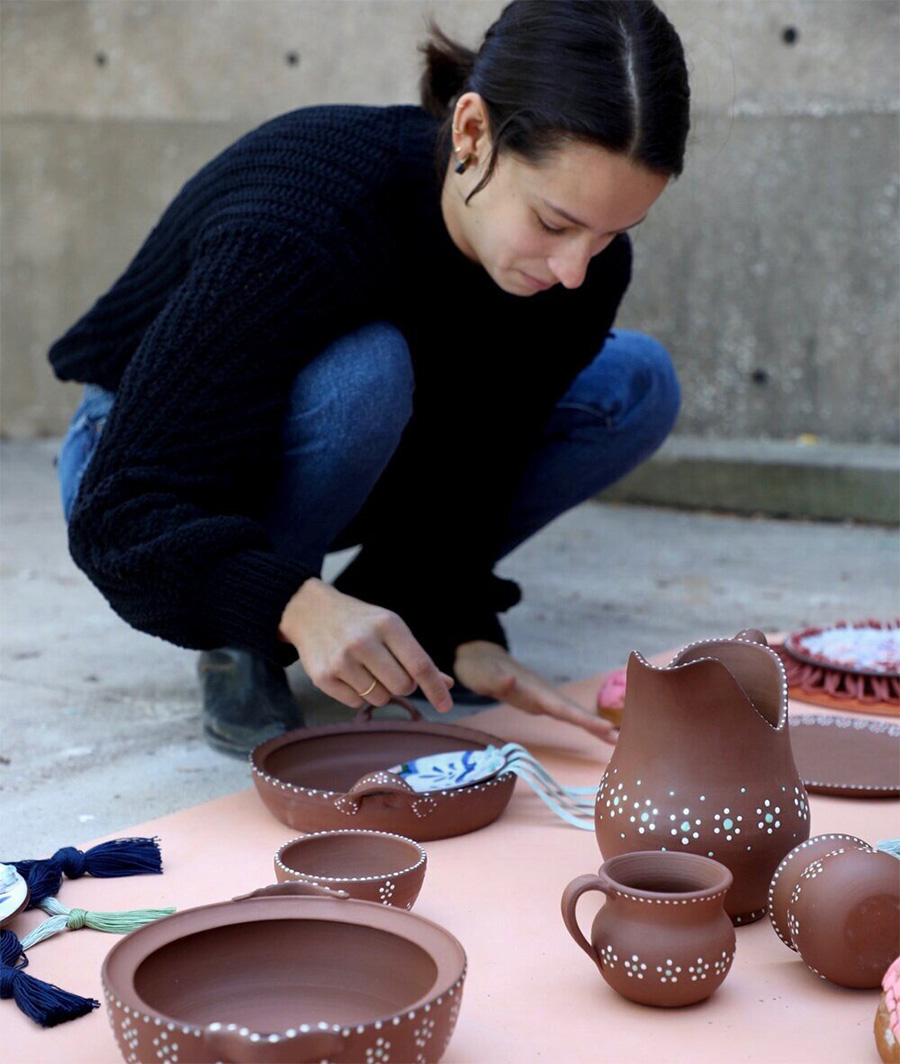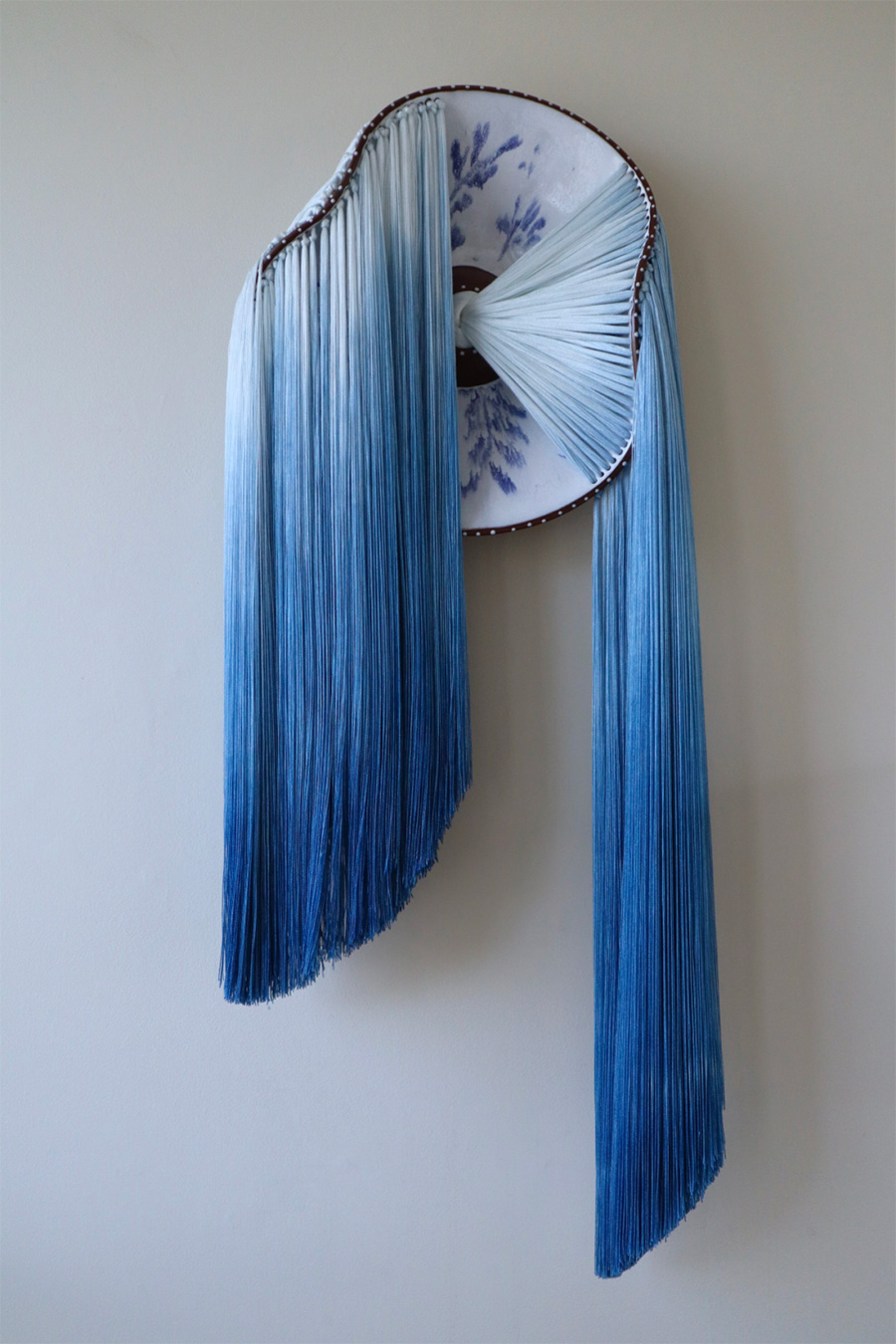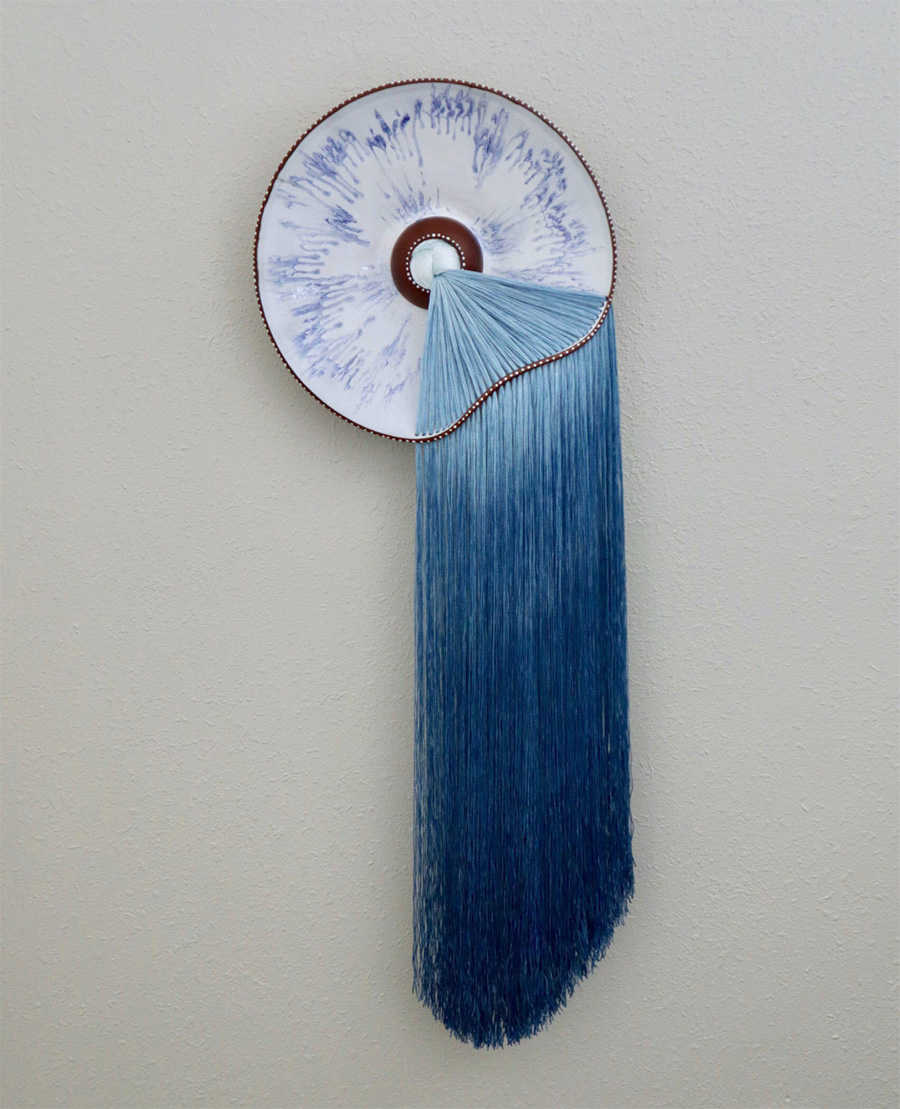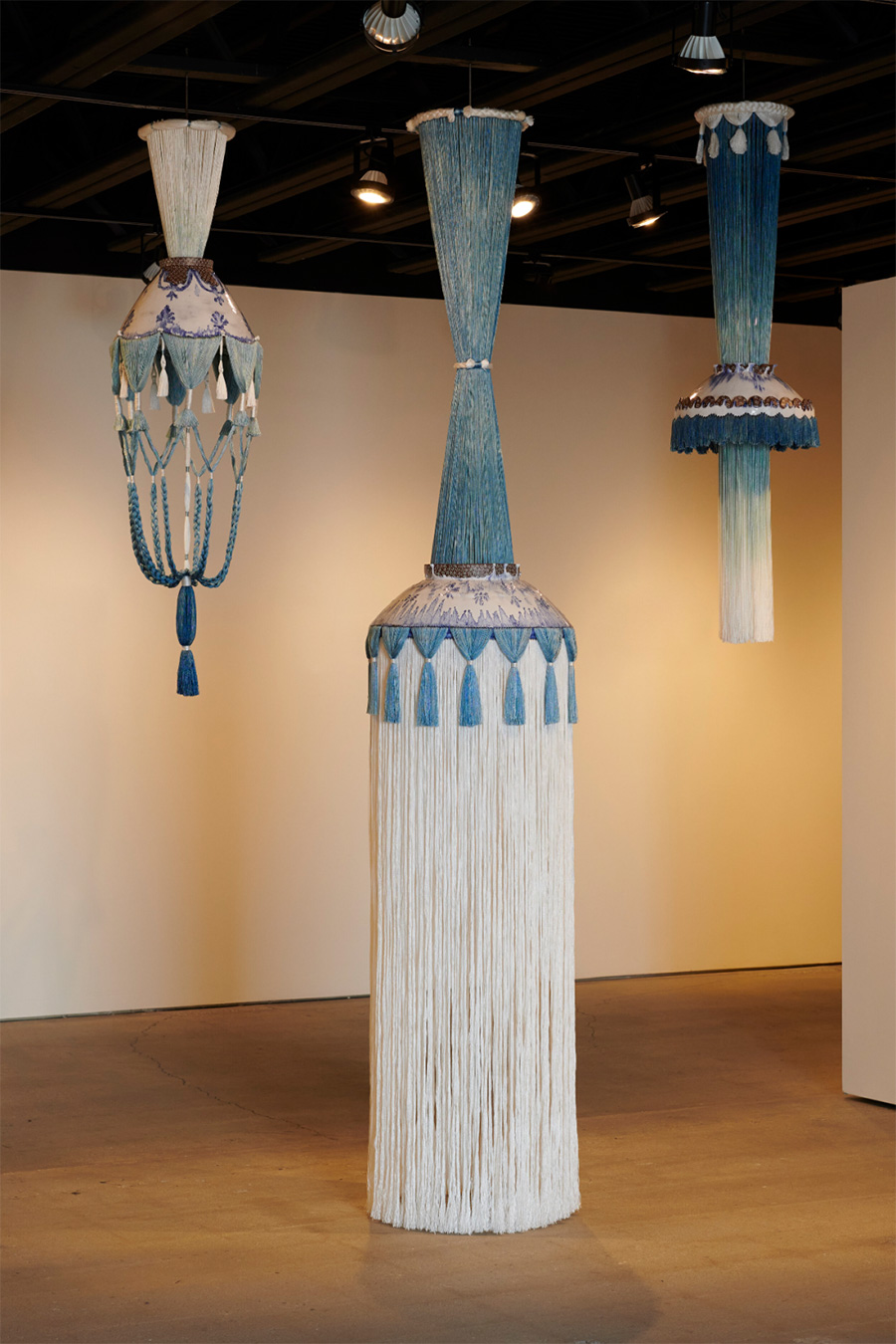
Nicole McLaughlin
墨西哥裔美国艺术家
出生于美国马萨诸塞州
Born in Massachusetts, USA
毕业于堪萨斯城艺术学院
Graduated from Kansas City Art Institute
创立工作室Nicole McLaughlin
Founded studio Nicole McLaughlin

我喜欢收集
I like to collect
有助于我在工作室
Items that help me in my studio
实践的物品
Items of practice
这让我了解了
This allows me to learn about
不同的传统陶瓷工艺
Different traditional ceramic techniques
—Nicole McLaughlin

Nicole McLaughlin在马萨诸塞州出生和长大,但她童年早期的大部分时间是在墨西哥度过的。作为第一代墨西哥裔美国人,她的成长深受多元文化的影响。Nicole目前是马萨诸塞州萨默维尔市Mudflat工作室的驻地艺术家,也是哈佛大学艺术办公室的讲师。Nicole继续从墨西哥陶瓷、纺织品和文化传统中汲取灵感,希望展示她的生活是如何被两种文化的碰撞所塑造的。
Nicole McLaughlin was born and raised in Massachusetts but spent much of her early childhood in Mexico. As a first-generation Mexican-American, her upbringing was heavily influenced by multiculturalism. Nicole is currently the Artist in Residence at Mudflat Studios in Somerville, MA and an Instructor at the Office for the Arts at Harvard. Nicole continues to draw inspiration from Mexican ceramics, textiles, and cultural traditions in hopes of showing how her life has been shaped by a collision of two cultures.
在Nicole McLaughlin的作品中,容器并不是作为实用的对象,而是作为纤维的载体。松散的丝线被染成微妙的渐变色和大地色,编织在倾斜的陶瓷边缘,并在中心打结。当纤维从陶瓷中流出、编织或构成陶瓷时,它扭曲了陶瓷的功能,但随着盘子和布料的融合,它成为了一个有意义的组成部分。这些容器蕴含着女性气质的表达以及个人和文化历史的本质。
The vessels in Nicole McLaughli work are not meant as objects of utility, instead they serve as vehicles for fiber. Dyed in subtle gradients and earth tones, the loose threads are woven through the sloping ceramic edges and knotted in the center. As the fiber flows from, weaves into, or frames the ceramic, it distorts the functionality but becomes a meaningful component as plate and cloth merge. The vessels contain an expression of femininity and an essence of personal and cultural history.

容器象征着女性的传统和期望,是讨论深深植根于墨西哥手工艺传统的材料与工艺的画布。对这些工艺的利用探索了墨西哥深厚的阶级和文化历史。纤维与陶瓷的结合使用,有力地诠释了我们如何看待实用物品以及与之相关的体验。从象征意义上讲,容器不仅能保存实物,还能在逝去很久之后保留生活中短暂的记忆。
The vessel, symbolically tied to the traditions and expectations of womanhood, acts as a canvas for a discussion between materials and processes deeply rooted in the craft traditions of Mexico. The utilisation of these crafts explores Mexico's deep class and cultural history. The use of fiber in combination with ceramic speaks powerfully to how we view utilitarian objects and the experiences associated with them. Symbolically, a vessel keeps not only the physical within but the ephemeral memories of life long after they have passed.












